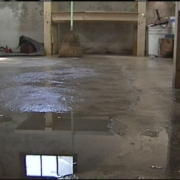The Three Levels of Water Seepage
Water Seepage
One of the first steps of dealing with water seepage is to determine where the water is coming from. This requires an inspection of the foundation. If you can determine the source of the water, it will become easier to determine a long term solution for your seepage problem.
An expert inspection of your foundation is required to determine the root cause of the seepage as well as the best method for repairing the foundation. Despite this, homeowners should arm themselves with knowledge when it comes to dealing with damage to their foundations. This includes spotting signs of foundation damage and locating the sources of water seepage.
Degrees of wetness
As you inspect your foundation to determine the source of seepage, it is important to note that there are three degrees of wetness that you should be on the lookout for.
- Moist or damp conditions
In many cases, water seepage is manifested as dampness or the presence of moisture on surfaces. It is normal for constructed spaces under ground level to have a higher level of dampness and humidity than spaces constructed above ground. However, when this moisture level increases as a result of seepage, you will find yourself dealing with moisture problems such as mold infestations.
Signs of moisture or dampness include growth of mold, condensate on surfaces, high humidity levels and efflorescence.
- Wet conditions
In some cases, the signs of seepage are more obvious. You may spot water puddles or wet surfaces in the basement. In these situations, the water will not cover the entire surface of the basement floor. These wet areas are good indicators of the points at which the foundation is leaking.
- Flooded conditions
In these cases, the water extends over the entire floor of the basement. A basement is considered to be flooded when the water covers the floor to a depth of one inch. This type of seepage is usually the result of extreme weather conditions. Repairing damage at this stage can be very costly.
It is important to keep a continuous eye on your basement. Search for signs of seepage in order to spot the problem in the early stages of development. Acting on the problem in the early stages will help you save money and time as the solution will not have to be as intensive as it would be for a more serious problem. Get in touch with a professional contractor if you spot any signs of seepage.

